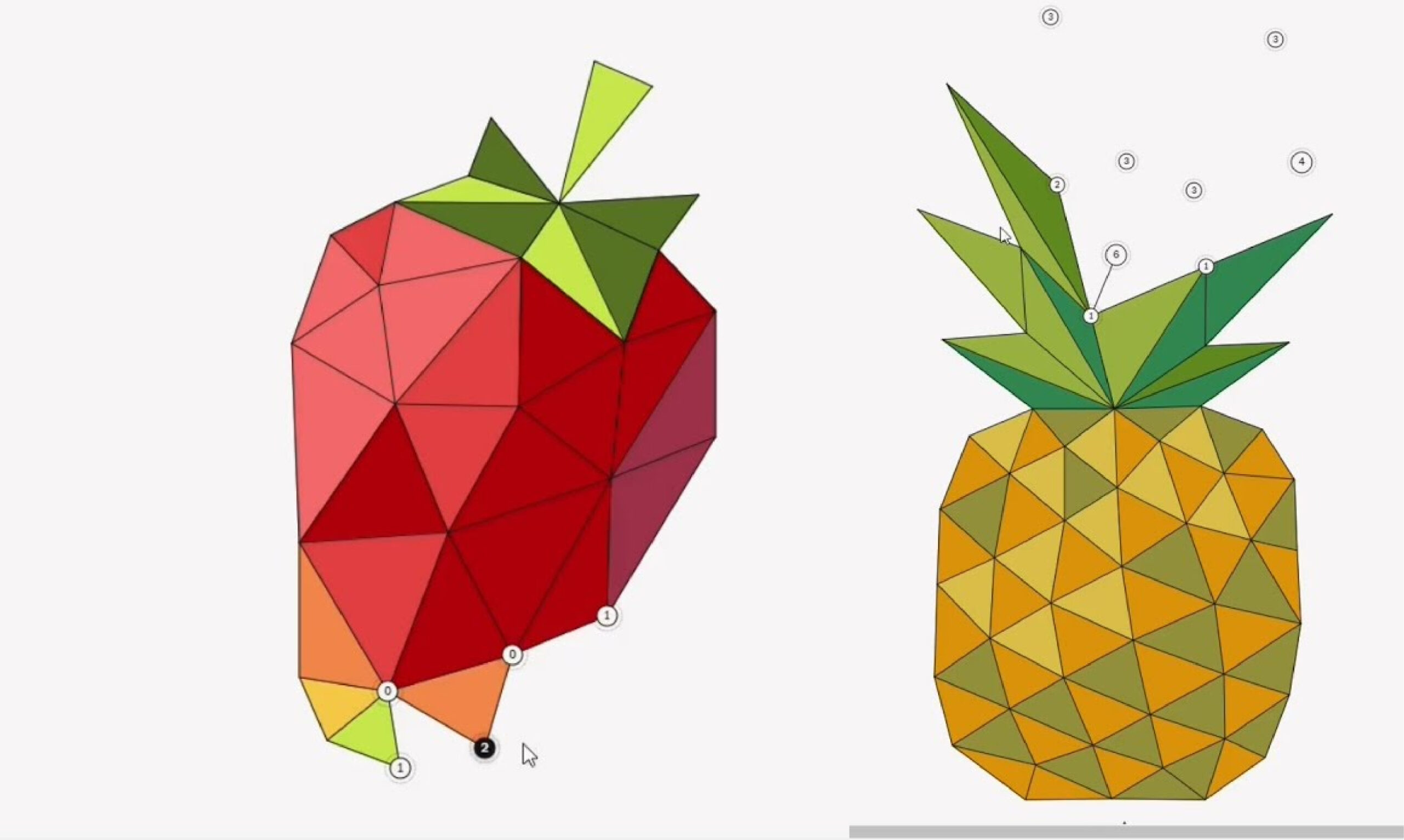The New York Times is widely known for its journalism, but over the years, it has also built a reputation for its engaging puzzles. Among the many games it offers, Vertex NYT has quickly gained a dedicated following. Unlike traditional crossword puzzles, Vertex NYT is a visual and strategic puzzle game that requires creativity, spatial awareness, and problem-solving skills. In this article, we will explore what Vertex NYT is, how to play it, why it has become so popular, and tips for improving your game. Whether you are a seasoned puzzle enthusiast or new to Vertex NYT, this deep dive will give you a comprehensive understanding of the game.
What Is Vertex NYT?
Vertex NYT is a puzzle game offered by The New York Times, designed to engage players with a unique and visually stimulating format. The goal of the game is to connect points on a grid using straight lines to create shapes, which eventually form an image. Each point, or “vertex,” is numbered, and players must connect the vertices in a way that aligns with the numbers assigned to each. Once all the connections are made, the lines reveal a hidden picture, often turning into something recognizable like an animal, object, or symbol.
The game can be seen as a blend of a dot-to-dot puzzle and a jigsaw puzzle, combining both logical thinking and artistic appreciation. The minimalistic design of Vertex NYT allows players to focus on the challenge of connecting points, while the satisfaction of completing the puzzle and revealing an image is a rewarding experience.
How to Play Vertex NYT
Playing Vertex NYT is simple in concept but can become increasingly challenging as the game progresses. The puzzle presents a grid with scattered points (or vertices), each marked with a number. The number indicates how many lines should be connected to that particular point. For example, a vertex with the number “3” means that you must connect it to three other vertices with straight lines.
Here’s a step-by-step guide on how to play:
- Understand the numbers: Each vertex has a number that tells you how many connections it should have. Your task is to create lines that satisfy these numbers.
- Make connections: Click on a vertex and then click on another vertex to draw a line between them. The objective is to ensure that the number of lines connected to each point matches the number given.
- Reveal the picture: As you connect more points, lines will begin to form shapes. Once all vertices are connected correctly, a hidden image will be revealed, signaling the completion of the puzzle.
- Undo mistakes: If you make an error or want to try a different approach, you can undo connections and start over without penalty. This flexibility allows players to experiment and find the correct solution at their own pace.
Why Vertex NYT Is So Popular
While The New York Times offers a variety of puzzles, Vertex NYT has carved out a niche for itself due to its unique gameplay and appeal to a broad audience. There are several reasons why this puzzle has become so popular:
1. Visual Appeal
Unlike traditional puzzles that are often text-heavy, Vertex NYT is based on visual problem-solving. The appeal of creating images by connecting lines taps into both logical and artistic thinking. The end result is not just a completed puzzle, but a picture, which adds a layer of creativity and satisfaction that is not typically found in other puzzle formats.
2. Accessibility and Simplicity
One of the reasons Vertex NYT is so beloved is its accessibility. While some puzzles can feel intimidating or overly complicated, Vertex NYT offers a simple concept that anyone can grasp quickly. The game doesn’t require deep knowledge of trivia or vocabulary, as crosswords might, making it approachable for a wider range of players.
Moreover, its intuitive interface makes it easy for both experienced puzzle solvers and beginners to enjoy the game without getting frustrated by overly complex instructions or gameplay mechanics.
3. A New Kind of Challenge
For puzzle lovers who have grown tired of traditional games like crosswords or Sudoku, Vertex NYT offers a refreshing change of pace. While it may seem simple, the game can become surprisingly challenging as the number of vertices and connections increases. It requires logical reasoning, spatial awareness, and strategic planning, making it a fulfilling and mentally stimulating exercise.
4. Relaxing and Meditative Experience
For many, playing Vertex NYT is a relaxing activity. The game’s simple design, combined with its calm and methodical gameplay, allows players to immerse themselves in the process of solving the puzzle. Unlike time-based or competitive games, there’s no rush or pressure, which makes Vertex NYT an enjoyable way to unwind.
Tips for Improving Your Vertex NYT Skills
As with any puzzle game, practice makes perfect. While Vertex NYT is designed to be accessible to all skill levels, mastering the game requires strategy and thoughtfulness. Here are some tips to help improve your Vertex NYT game and tackle more challenging puzzles:
1. Start with the Highest Numbers
A useful strategy in Vertex NYT is to start by connecting vertices with the highest numbers first. These points typically have more connections to make, which can serve as an anchor for the rest of the puzzle. By solving the most complex vertices early on, you can make the rest of the puzzle easier to manage.
2. Look for Symmetry
Many Vertex NYT puzzles are designed with symmetry in mind. If you notice patterns or shapes forming on one side of the puzzle, it’s likely that a similar structure exists on the opposite side. Paying attention to symmetry can help you solve the puzzle more efficiently.
3. Take a Step Back
If you’re feeling stuck, sometimes the best strategy is to take a break and come back to the puzzle later with fresh eyes. Often, a brief pause can provide clarity and help you see new connections or solutions you may have missed before.
4. Use Trial and Error
Don’t be afraid to experiment with connections. If you’re unsure about a specific connection, try it out and see how it impacts the rest of the puzzle. You can always undo mistakes, so exploring different possibilities can be a helpful way to find the correct solution.
The Evolution of Puzzle Games in The New York Times
The New York Times has a long history of offering puzzles to its readers, starting with its legendary crossword puzzle in 1942. Over the decades, it has expanded its puzzle offerings to include games like Spelling Bee, Wordle, and Vertex NYT. These puzzles have become a staple for many readers, offering daily challenges that test different skills, from vocabulary to problem-solving.
Vertex NYT represents a departure from traditional text-based puzzles, appealing to those who prefer visual and logical challenges. Its popularity highlights the growing demand for diverse puzzle experiences that engage users in new ways.
The Future of Vertex NYT
As Vertex NYT continues to gain popularity, it is likely that The New York Times will continue to expand and develop the game. New puzzles are frequently added, and there’s potential for additional features or modes that could make the game even more engaging. Whether through more complex puzzles, seasonal themes, or new mechanics, Vertex NYT is sure to remain a favorite among puzzle enthusiasts.
Conclusion: Vertex NYT, A Puzzle Worth Playing
Vertex NYT has quickly become a standout in the world of online puzzles, offering a unique combination of visual art and strategic problem-solving. Its simple yet engaging gameplay, wide accessibility, and relaxing nature make it an appealing choice for both casual gamers and puzzle aficionados alike. By connecting vertices and creating images, players can enjoy a rewarding and creative experience that sets Vertex NYT apart from traditional puzzle games.




